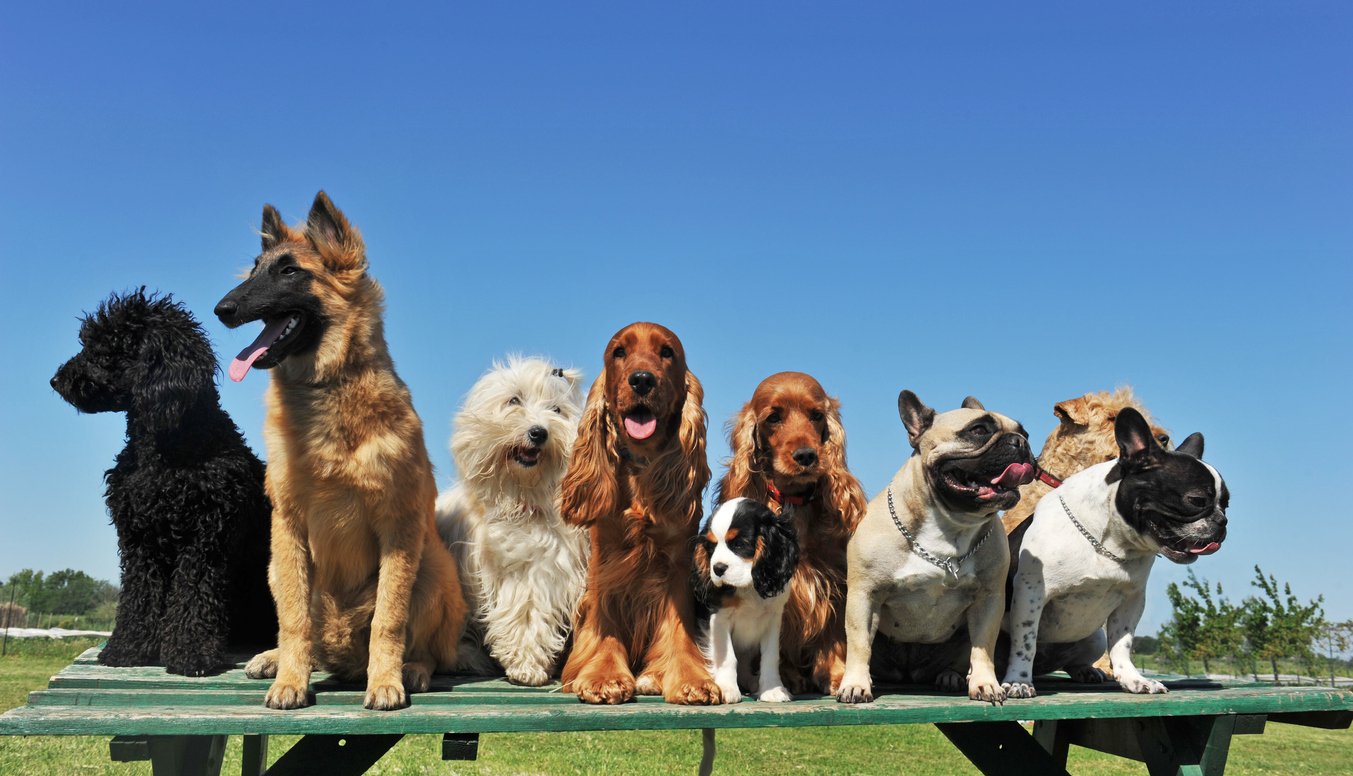When the temperature drops and snow begins to fall, pet-care professionals around the world face a unique set of seasonal challenges. From frostbite prevention to ensuring animals stay hydrated, winter demands extra attention to keep pets safe, healthy, and happy.
No matter where your clients live — whether in icy northern climates or tropical areas that still experience cooler nights — every pet can feel the effects of winter. As a pet-care business, sharing proactive seasonal guidance not only helps animals thrive but also builds trust and loyalty among your customers.
By communicating timely advice and best practices, you position your business as a year-round partner in pet health and wellness. Here’s a detailed guide to help you and your clients prepare for a cozy, safe winter together.
General Winter Pet Care Tips
1. Keep it cozy and consistent.
Animals can be sensitive to rapid temperature changes. Maintain steady indoor warmth, especially for smaller or short-coated pets. Avoid placing beds near drafty doors or windows.
2. Hydration is essential.
It’s easy to forget about hydration during cold months, but dry indoor air and reduced activity can cause dehydration. Make sure pets always have access to fresh, unfrozen water. Heated water bowls or automatic dispensers can help.
3. Adjust nutrition for activity levels.
Indoor pets may need fewer calories due to reduced exercise, while outdoor or working animals might require more to stay warm. Encourage clients to discuss dietary changes with their vet.
4. Watch out for seasonal hazards.
Antifreeze, ice melt, and even holiday treats pose hidden risks. Ethylene glycol (common in antifreeze) is deadly even in small amounts. Suggest pet-safe ice melts and remind clients to store chemicals securely.
5. Maintain regular grooming.
Many assume pets need fewer baths in winter, but clean coats insulate better. Brushing helps distribute natural oils and prevents matting that can trap moisture.

Dogs: Winter Safety and Comfort
Dogs often love the snow, but cold weather brings its own set of risks. Here’s how owners can help keep their pups safe:
Paw protection: Ice, salt, and de-icing chemicals can crack paw pads or cause irritation. Suggest clients rinse paws after every walk and apply a protective balm. Booties are excellent for sensitive paws.
Proper layering: Some dogs, like greyhounds and Chihuahuas, benefit from warm sweaters or coats. Remind clients to choose breathable, water-resistant materials and ensure the fit allows free movement.
Exercise safely: Encourage shorter, more frequent walks when temperatures drop. For high-energy dogs, recommend indoor activities like training games or puzzle feeders to reduce boredom.
Avoid frozen ponds: Ice can look solid but may not support a dog’s weight. Always keep dogs on leash around frozen water.
Visibility matters: With shorter days, suggest reflective collars and LED lights for evening walks. Visibility keeps both pets and owners safe from vehicles and cyclists.

Cats: Indoor Comfort and Cold Weather Health
Cats are experts at finding warm spots, but they’re also prone to sneaky winter dangers.
Keep cats indoors: Outdoor cats can suffer frostbite, hypothermia, or injury from seeking warmth in unsafe places — like under car hoods. Remind clients to “knock before you start” in winter.
Create warm havens: Recommend soft, insulated beds placed off the floor and away from drafts. Heated cat beds or thermal pads offer safe warmth for older cats or those with arthritis.
Monitor indoor humidity: Low humidity can lead to dry skin and static shock. Suggest humidifiers or safe pet moisturizers to reduce irritation.
Encourage activity: Indoor cats can become less active in winter. Toy rotations, window perches, and vertical climbing structures help keep them engaged and fit.

Small Mammals: Warm, Dry, and Safe
Rabbits, guinea pigs, hamsters, and other small mammals rely heavily on their environments for temperature regulation.
Bring hutches indoors: Outdoor enclosures can drop below freezing quickly. Move them into sheltered spaces like garages or sunrooms, away from drafts.
Bedding basics: Deep layers of straw, paper bedding, or fleece help small pets burrow and stay insulated. Replace damp or soiled bedding often.
Avoid direct heat: Heat lamps or space heaters can easily overheat enclosures. Instead, use heating pads made for pets under part of the habitat — allowing animals to move away from the warmth if needed.
Diet and water: Check water bottles frequently, as they can freeze. Fresh greens also add hydration.

Birds: Humidity, Light, and Stability
Our feathered friends are particularly sensitive to changes in temperature and humidity.
Control drafts: Keep cages away from windows and vents. A nighttime cage cover retains warmth and mimics natural sleeping conditions.
Humidity support: Dry air can lead to brittle feathers and respiratory irritation. A humidifier or regular misting helps maintain comfort.
UV light and day cycles: Shorter days affect birds’ circadian rhythms. Provide bird-safe UVB lighting to supplement natural sunlight, supporting vitamin D synthesis and mood.
Enrichment: Reduced outdoor time can cause boredom. Rotate toys and offer foraging opportunities to keep birds stimulated.

Reptiles and Amphibians: Temperature Precision
Cold-blooded pets rely on external heat sources, making environmental control crucial.
Maintain heat gradients: Use thermostats to monitor basking zones and cooler areas within tanks. Ensure backup power during winter storms.
Track humidity: Heating systems often lower humidity. Misting, damp hides, or humidifiers can prevent dehydration or incomplete shedding.
Diet changes: As metabolism slows, reptiles may eat less. Remind owners not to overfeed during brumation periods.
Prevent drafts: Position tanks away from cold windows or doors, and seal gaps around lids.

Horses and Livestock: Seasonal Stability
Large animals have their own winter needs, particularly in colder regions.
Shelter and bedding: Provide dry, windproof shelters with plenty of clean bedding. Good ventilation prevents respiratory issues without letting in drafts.
Hydration: Horses can drink less when water is icy. Heated buckets or tank heaters help maintain consistent intake. Dehydration is a common but overlooked winter risk.
Blanketing best practices: Not all animals require blankets, but older or clipped horses may benefit. Ensure blankets fit well and check daily for dampness or rubbing.
Hoof and coat care: Snow and ice can pack into hooves, causing discomfort. Regular farrier visits and daily checks help prevent issues.
Feeding adjustments: Extra forage helps maintain body temperature naturally. Encourage clients to feed good-quality hay and monitor body condition throughout winter.
Climate Considerations
Since pet-care businesses around the world face different climates, it’s helpful to share localized advice:
-
Tropical regions: Focus on rain protection, humidity control, and cooler indoor environments rather than cold-weather insulation.
-
Temperate climates: Emphasize adaptable care — pets might experience warm days and cold nights in the same week.
-
Northern or high-altitude regions: Stress frostbite prevention, paw protection, and the importance of shelter.
By tailoring advice to your client base, you make your business relevant and responsive — a key factor in long-term client retention.
How to Communicate Winter Pet-Care Tips to Clients
Sharing valuable seasonal content builds your credibility and strengthens client loyalty. Here’s how to communicate effectively:
1. Email Newsletters
Create a winter wellness email series featuring practical reminders (“Check your dog’s paws after every walk!”). Keep messages short, friendly, and consistent.
2. Social Media
Visual content performs best — share photos of pets enjoying the snow safely or infographics about hydration. Hashtags like #WinterPetSafety or #CozyPets can help your posts reach wider audiences.
3. Blog Content
Write detailed follow-up articles focused on specific species or concerns. For example, “How to Keep Your Dog’s Paws Healthy This Winter” or “Protecting Small Animals from Drafts.”
4. Printed Materials
Handouts, checklists, and posters in your reception area reinforce the message. You can even brand them with your business logo for an extra professional touch.
5. In-App or SMS Notifications
If you use Revelation Pets, send quick seasonal reminders or appointment updates through automated messages. Example: “Reminder: Salt can irritate paw pads. We recommend a quick rinse after walks!”
6. Community Events
Partner with local shelters or veterinarians to host winter care workshops. They’re great for building visibility and trust in your community.

Why Seasonal Education Strengthens Client Relationships
When pet-care businesses educate their clients, they build trust. Proactive communication shows that your team genuinely cares about pets’ well-being, not just about bookings.
By consistently offering practical, science-based advice, you position your brand as a reliable authority. Clients are more likely to return, recommend your services, and engage with your content when they know you’re invested in their pets’ year-round happiness.
Keep Pets and Customer Relationships Warm this Winter
The season may bring chilly weather, but with attentive care, every animal can stay warm, healthy, and content. From paw balms and hydration reminders to safe shelter and communication strategies, each small step adds up to a big impact on pet well-being.
At Revelation Pets, we empower pet businesses to deliver compassionate, professional care in every season. By sharing helpful, timely advice and using smart communication tools, you’re not only protecting animals — you’re nurturing the trust and loyalty that make your business thrive.
So bundle up, stay proactive, and make this winter one of warmth and well-being for pets and their people alike.






